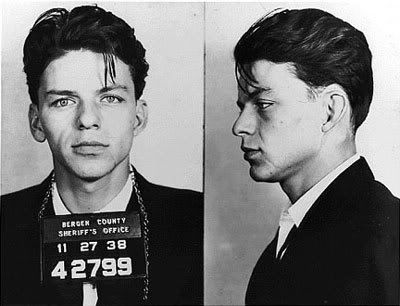
Frank sinatra Wallpapers
Date of Birth : 12 December 1915, Hoboken, New Jersey, USA
Date of Death : 14 May 1998, Los Angeles, California, USA (heart & kidney disease; bladder cancer)
Birth Name : Francis Albert Sinatra
Height : 5' 7" (1.70 m)
Nickname :
The Voice
Chairman of the Board (of Show Business)
Ol' Blue Eyes
Swoonatra
The Sultan of Swoon
La Voz
Date of Death : 14 May 1998, Los Angeles, California, USA (heart & kidney disease; bladder cancer)
Birth Name : Francis Albert Sinatra
Height : 5' 7" (1.70 m)
Nickname :
The Voice
Chairman of the Board (of Show Business)
Ol' Blue Eyes
Swoonatra
The Sultan of Swoon
La Voz

Growing up on the streets of Hoboken, New Jersey, made Frank Sinatra determined to work hard to get ahead. Starting out as a saloon singer in musty little dives (he carried his own P.A. system), he eventually got work as a band singer, first with The Hoboken Four then with Harry James, then Tommy Dorsey. With the help of George Evans (Sinatra's genius press agent), his image was shaped into that of a street thug and punk who was saved by his first wife, Nancy. In 1942 he started his solo career, instantly finding fame as the king of the bobbysoxers - the young women and girls who were his fans - becoming the most popular singer of the era among teenage music fans. About that time his film career was also starting in earnest, striking box-office gold early on with a lead role in Anchors Aweigh (1945), a Best Picture nominee at the 1946 Academy Awards. Sinatra was awarded a special Oscar for his part in a short film against intolerance, The House I Live In (1946). His career on a high, Sinatra went from strength-to-strength on record, on stage and on screen, peaking in 1949, once again with Gene Kelly, in the MGM musical On the Town (1949) and Take Me Out to the Ball Game (1949).

A controversial public affair with screen siren Ava Gardner broke up his marriage to Nancy Barbato. Record sales dwindled in the early 1950s and although Sinatra continued to act, now, appearing in more dramatic fare such as Meet Danny Wilson (1951), a vocal cord haemorrhage all but ended his career. He fought back, winning the coveted role of Maggio in From Here to Eternity (1953). He won an Oscar for best supporting actor and followed this with a scintillating performance as a deranged assassin in Suddenly (1954) and arguably a career best performance and Academy Award nomination for Best Actor in the powerful drama The Man With the Golden Arm (1955). Known as "One-Take Charlie" for his approach to acting that strove for spontaneity and energy, rather than perfection, he was an instinctive actor who was best at playing parts that mirrored his own personality. He continued to give strong and memorable performances in such films as Guys and Dolls (1955), The Joker is Wild (1957) and Some Came Running (1958). In the 1960s Sinatra became mildly prolific as a producer bringing such films as A Hole in the Head (1959), Sergeants 3 (1963) and Robin and the 7 Hoods (1964) to the big screen. Lighter roles along side Rat Pack buddies Dean Martin and Sammy Davis Jr were lucrative, especially the famed Ocean's 11 (1960), however, Sinatra alternated such projects with more stern offerings, namely The Manchurian Candidate, arguably Sinatra's finest picture, and his directorial debut, None But the Brave, which was the first Japanese/American co-production.

That same year Von Ryan's Express (1965) was a box office sensation. In 1967 Sinatra returned to familiar territory in Sidney J. Furie's The Naked Runner (1967), one again playing as assassin in his only film to be shot in the U.K. and in Germany. That same year he starred as private investigator Tony Rome (1967), a role he reprised in the sequel, Lady in Cement (1968). He also starred with Lee Remick in The Detective (1968) a film daring for its time and a major box office success. After appearing in the comic western Dirty Dingus Magee (1970) Sinatra refrained from acting for a further seven years until producing the made-for-TV movie Contract on Cherry Street (1977). Based on the novel by William J. Rosenberg, this fable of vigilante cops turning vigilante against the mob boasted a stellar cast and was a ratings success. Sinatra returned to the big screen in The First Deadly Sin (1980) once again playing a New York detective with a moving, understated performance that was a fitting coda to his career as a leading man. He made one more appearance on the big screen with a cameo in Cannonball Run II (1984) and a final acting performance in Magnum P.I. in 1987 as a retired detective seeking vengeance on the killers of his granddaughter in an episode entitled Laura.








No comments:
Post a Comment
Dear Visitor,
Please feel free to give your comment. Which picture is the best?
Thanks for your comment.